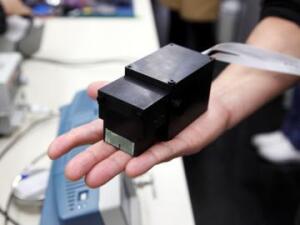by
Lauren Dubinsky, Senior Reporter | May 23, 2017

Capable of high-resolution, multicolor
3-D molecular imaging
A palm-sized medical gamma ray camera has the potential to help solve challenges associated with the short half lives and high cost of PET radiotracers.
"All of these problems could be addressed if gamma rays of arbitrary energy could be easily visualized in 3-D space," Jun Kataoka, professor of applied physics at Waseda University in Tokyo, said in a statement. "This would be as revolutionary as black and white television turning into color, dramatically increasing the amount of information we could obtain from an image."
Kataoka and his team developed the Compton camera, which only weighs about 580 grams, to realize this goal. In a mouse experiment, they demonstrated that it’s capable of performing high-resolution, multicolor 3-D molecular imaging.



Ad Statistics
Times Displayed: 365465
Times Visited: 7052 Quality remanufactured Certified Centrifuges at Great prices! Fully warranted and backed by a company you can trust! Call or click for a free quote today! www.Centrifugestore.com 800-457-7576
The camera was rotated around the mouse, which was administered iodine, strontium and zinc radiotracers, from 12 angles. The team found that these new radiotracers successful accumulated in the thyroid, bones and liver, respectively.
After the measurement time, which totaled around two hours, the team successfully demonstrated the effectiveness of simultaneous imaging involving multiple radiotracers. They also showed that they can image the gamma rays in near real time with a resolution equivalent to PET.
Kataoka is now working on developing a gamma ray camera that functions like the human eye, in the sense that it can instantly distinguish the colors and brightness of light from all directions and determine the object’s shape in 3-D.
He thinks this technology could help track the behavior of cancer cells and minerals in the body by combining conventional PET drugs with new radiotracers. He also envisions that it could calculate the survival rate of a transplanted organ, develop cheaper and more convenient medical imaging drugs and monitor the effectiveness of particle therapy.
"As radiation technology is still emerging, we look forward to expanding the possibilities of next-generation radiation imaging with this 'on demand' Compton camera," said Kataoka.

